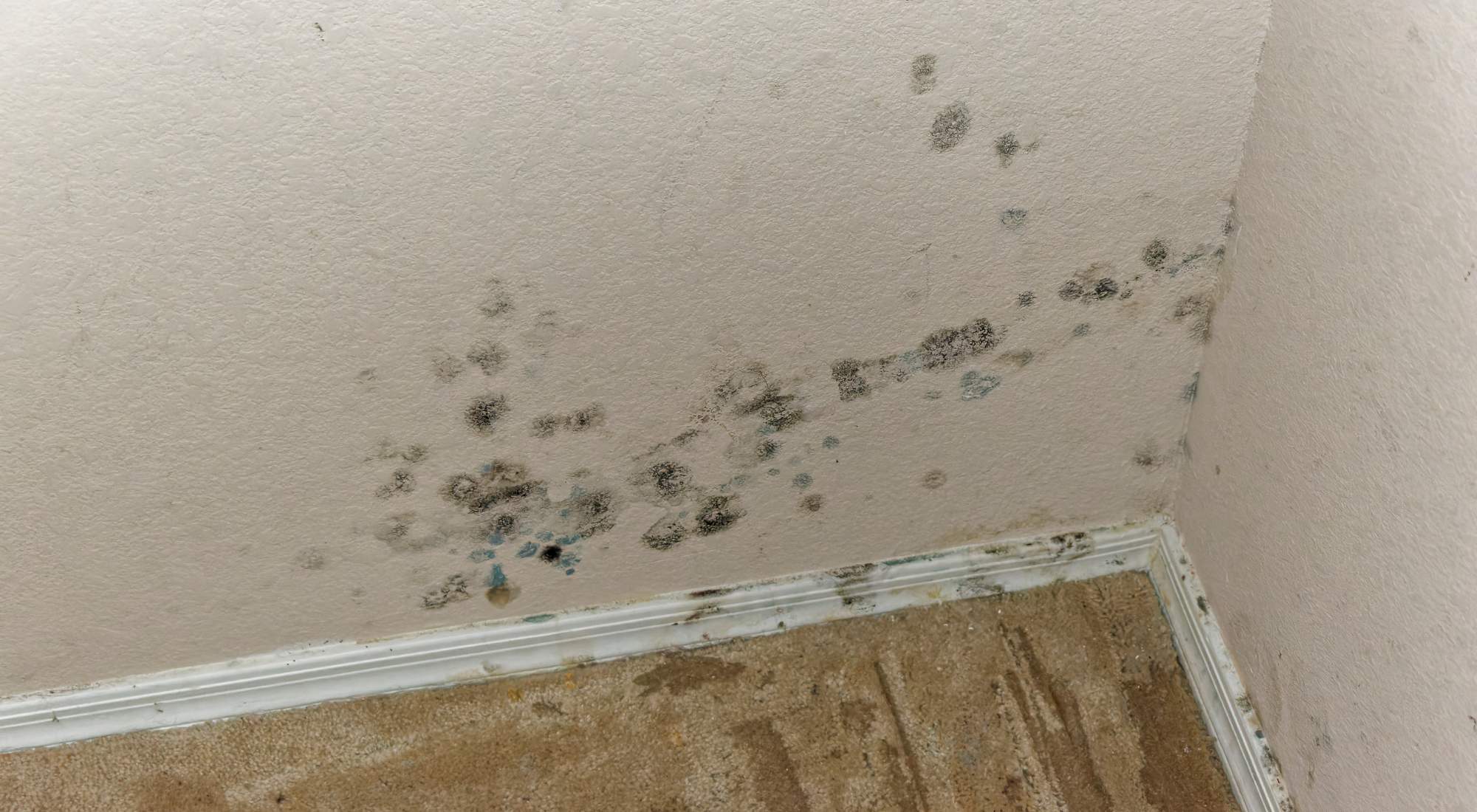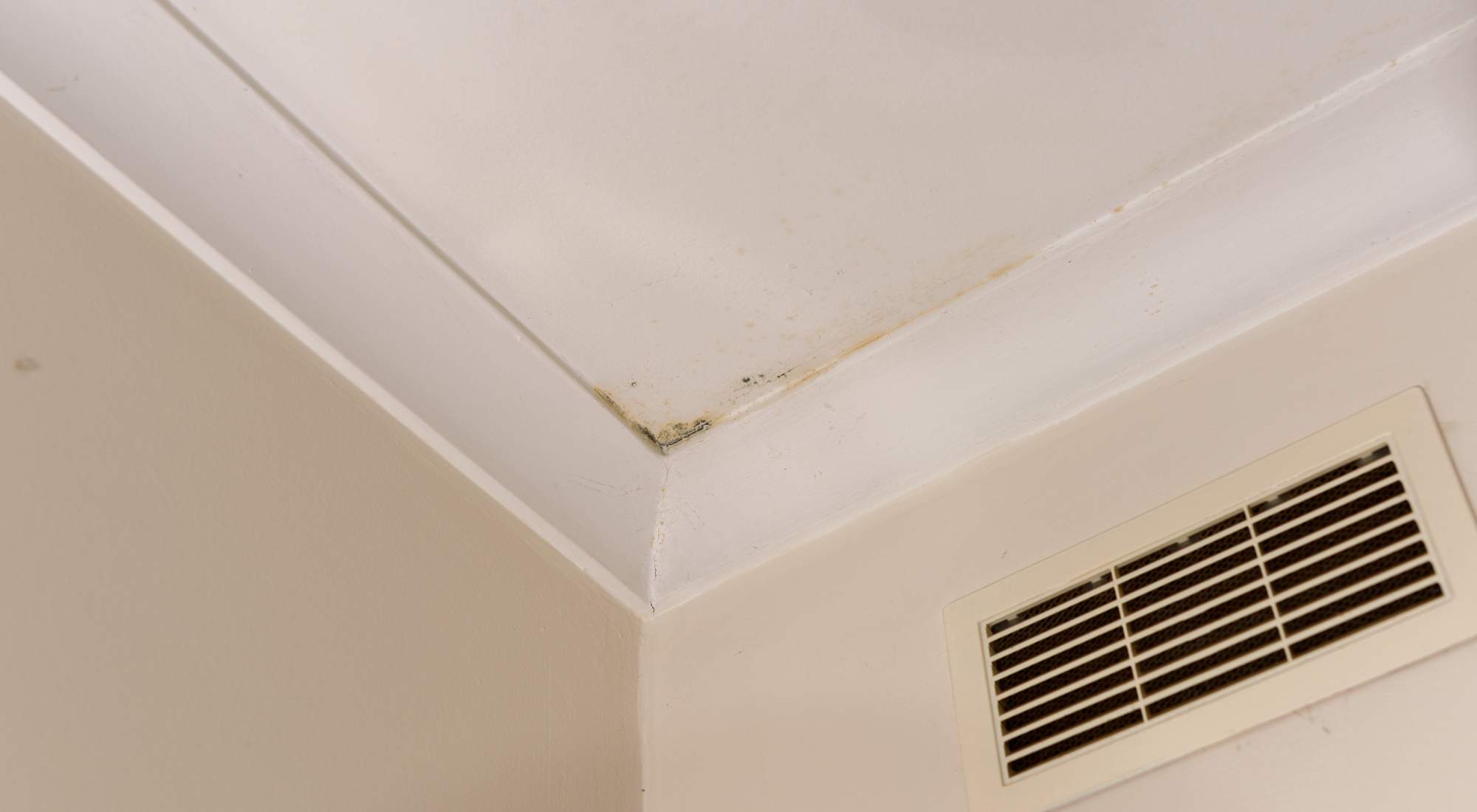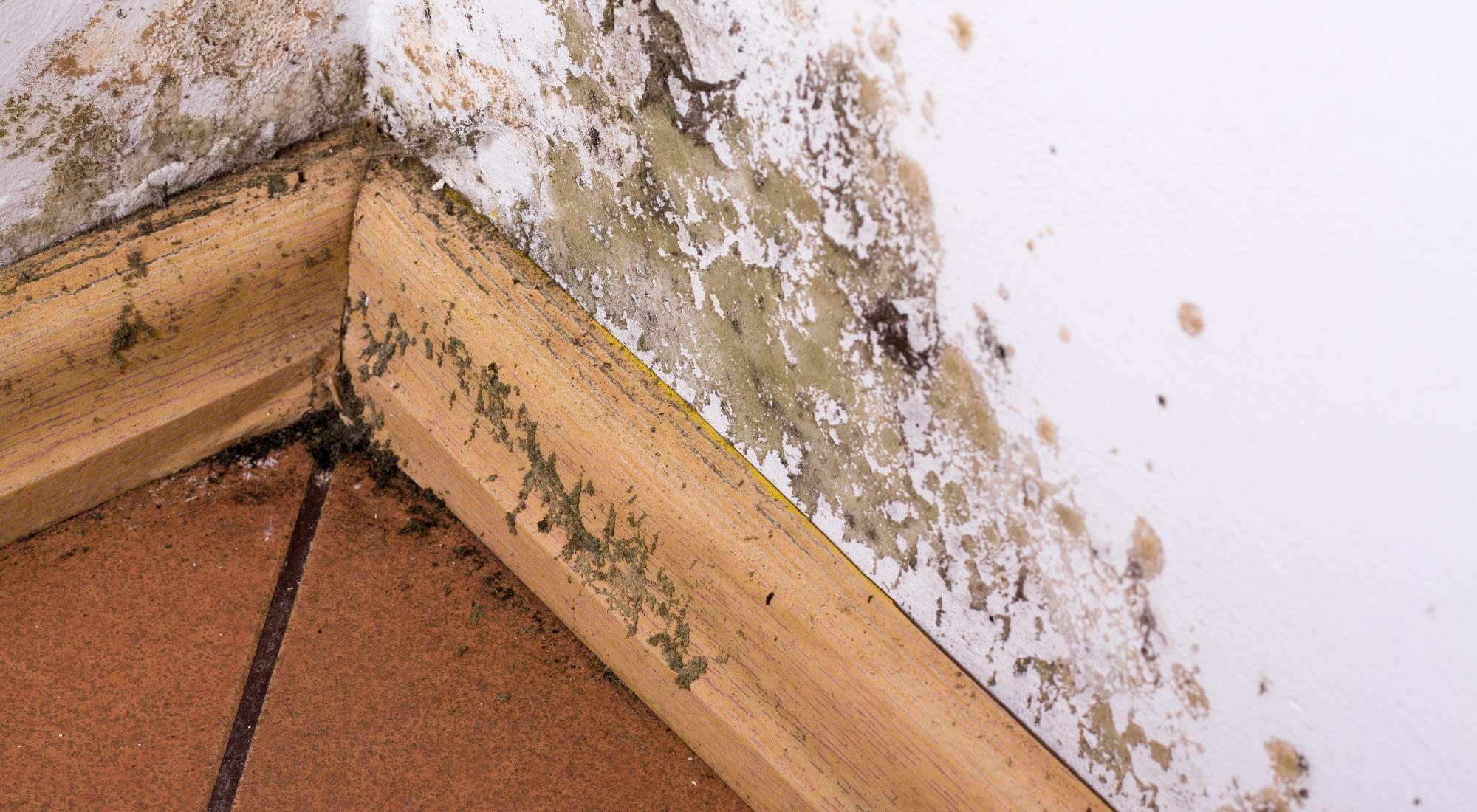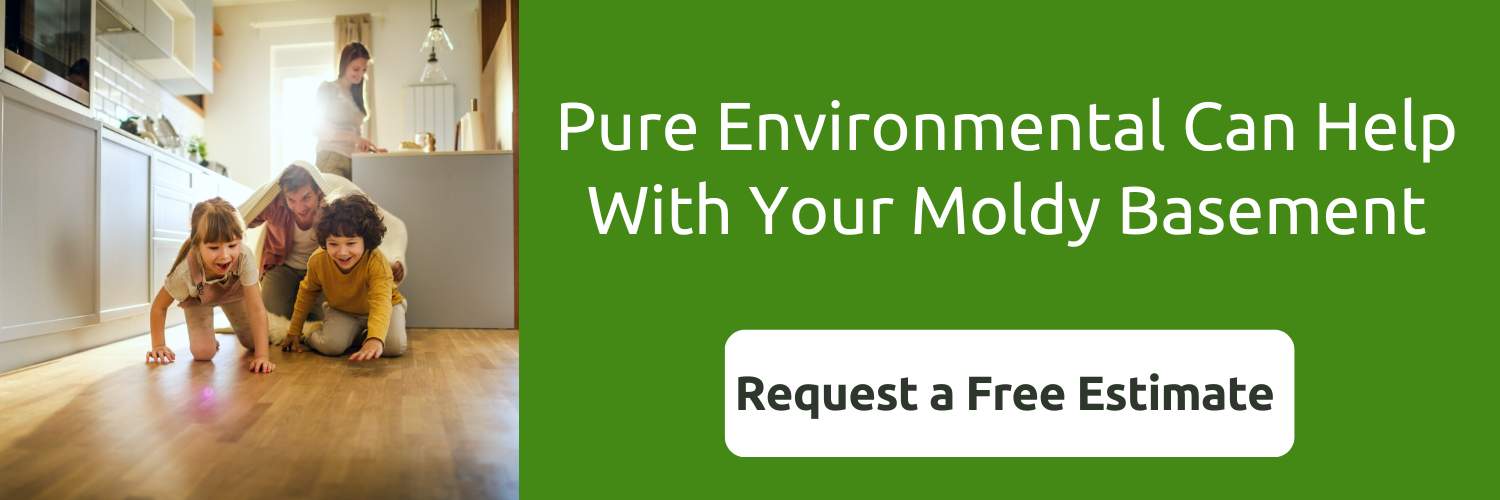Have you had the misfortune of discovering mold growing behind your baseboards? It’s a disturbing and discouraging discovery, for sure. If it’s growing behind the baseboards, where else is it growing unbeknownst to you? Isn’t it a bit much to add removing and cleaning baseboards to your regular housekeeping routine?
How can you address mold when you can’t fully expose it?
Mold is insidious and invasive, a force to be reckoned with. It can grow so gradually that you don’t notice until it’s too late. It doesn’t just sit on surfaces but seeps down into the pores so that a superficial cleaning is insufficient to eradicate it.
Mold may be a seasoned adversary, but we at Pure Environmental are not afraid of it. We encourage you to take up arms to stop the mold before it gains the upper hand. Read on to learn about mold’s tactics, how to prevent it from gaining a foothold, and how to banish it from your home.
Table of Contents
- How Do You Remove Mold From Drywall and Baseboards?
- 2 Primary Objectives of Mold Treatment Behind Baseboards
- How Common Is It To Have Mold Behind Your Baseboards?
- How To Prevent Future Mold Growth Behind Baseboards
- Is Baseboard Replacement Necessary After Treating for Mold Behind Them?
- Pure Environmental: Mold Remediation Behind Baseboards or Anywhere in Your Home
How Do You Remove Mold From Drywall and Baseboards?
There are a few options for removing mold from drywall and baseboards, and which you choose depends on your level of expertise and the extent of the damage. Baseboards may be removed and cleaned or they may need to be replaced. Drywall may be cleaned or replaced as well.
DIY Methods
If you see evidence of water damage, know that cleaning your baseboards will not be sufficient to address the mold problem. There is likely more mold than is visible, in the insulation, the drywall, or under the flooring. You might be able to remove some of the mold, but it will just grow back if there is moisture to help it grow.
In this case, it’s best to turn to professional mold remediation. Otherwise, you risk releasing the mold spores into the air and allowing it to take up residence elsewhere in the house.
If it seems that the mold is localized, you might opt to try to clean it yourself. Before you attempt to get at the mold, be sure to wear personal protective equipment, including gloves, goggles, and an N-95 respirator. Then follow these steps:
- Cut through any caulk on the baseboards with a utility knife.
- Drive a chisel down between the wall and one end of the baseboard.
- Widen the gap enough to fit a crowbar into it. Place a board or thin book behind the crowbar to avoid damaging the wall when you lever the baseboard away from the wall with the crowbar.
- Lever the baseboard away from the wall gradually until you get to the end.
- At this point, you should be able to determine if there is water damage behind the baseboard. If so, consult a professional.
- Use a vacuum equipped with a HEPA filter to vacuum the area to remove as many mold spores as possible.
- Remove the mold with dish soap and water, scrubbing with a soft-bristle brush. Dry thoroughly with a towel.
- If this doesn’t remove the mold, spray it with a mixture of distilled white vinegar and water and let it sit for an hour. Wipe the area with a wet cloth, then dry with a towel.
- If mold persists, use a soft-bristle brush to apply a mixture of one cup of water and one tablespoon of Borax. Scrub away the mold and wipe up excess liquid. Quickly dry with a fan or dehumidifier.
This will probably not prevent mold from returning, but it can remove visible mold.

How the Professionals at Pure Environmental Treat Mold Behind Baseboards
At Pure Environmental, we follow the Institute of Inspection Cleaning and Restoration Certification standards for mold remediation. These standards are designed to prevent the recurrence of mold growth by removing its source.
Our protocol for addressing mold is as follows:
- Conduct an inspection and, if indicated, collect samples for testing and send them to the lab to confirm the presence and type of mold. (testing is often not required at all)
- Isolate and contain the mold. Remove any materials necessary for mold elimination.
- Treat the mold by applying EPA registered moldicides and often mold stain removers. Clean all surfaces, including any necessary scrubbing and vacuuming the mold using a negative air vacuum with a HEPA filter.
- Perform PurAyr treatment to further decontaminate everything within the containment zone and kill mold spores.
- Follow up by repeating mold testing. (most often no testing is required unless specified by the customer, in which case we typically hire an external 3rd party for testing)
- Replace and repair materials that were disposed of.
If you need mold remediation, we hope you’ll allow us to demonstrate our professional competence against the siege of mold besetting your home. Call us today to make us your ally.
2 Primary Objectives of Mold Treatment Behind Baseboards
#1: Get to the Source
Cleaning mold is necessary and good, but if you don’t get to the source of the moisture issue that is allowing the mold to develop, you’ll just be dealing with it again in the near future. Finding and resolving the source of the moisture issue is critical.
Before you think about replacing anything), have your house inspected for roof, window, and other kinds of leaks. Repair any leaks before proceeding.

#2: Stop the Spread
You want to make sure that the treatment is thorough so that the mold doesn’t continue to spread throughout the house. That’s why Pure Environmental follows the IICRC. The main goal of these standards is to protect the rest of the house from being infiltrated by mold.
How Common Is It To Have Mold Behind Your Baseboards?
It’s fairly common for mold to appear behind baseboards, but it’s rare to discover it there without first being alerted by the presence of mold nearby in a more visible area. It can grow unnoticed for a long time, thriving on water from leaks or rainstorms.
Baseboards themselves do not attract mold. The reason mold is often found behind baseboards is that they cover the area of the walls closest to the ground. Moisture from the ground is absorbed by the drywall, moving up by capillary action.
Signs You Have Mold Behind Your Baseboards
Many signs indicate that mold is growing behind your baseboards:
- Odor: Mold is often described as having a musty or earthy smell, like rotting vegetables or plants.
- Discoloration: Mold can be just about any color (green, white, orange, yellow, purple, red, and black).
- Baseboards pulling away from the wall: Although this may happen because of improper installation, it may also be because when building materials get wet, they expand.
- Water stains: Stains of various colors (brown, clear blue, gray) can indicate water has remained long enough to allow mold growth.
- Paint chipping: Though there are other possible causes, this can also indicate water damage.
- Health symptoms: Mold can affect people in many ways, but some common symptoms of mold toxicity are allergic reactions, asthma attacks, and lung infections (the latter in immunocompromised individuals).
Toxic mold exposure, especially for prolonged periods, can also cause digestive disorders, fatigue, mental illness, ear infections, dizziness, skin rashes, and joint pain or numbness.
It’s always advised to seek the advice of a trusted medical professional who specializes in mold-induced illnesses if there has been possible exposure to toxic mold.
Causes of Mold Behind Baseboards
Moisture is the main cause of mold growth. It may rise through the floor because of inadequate waterproofing of the foundation and walls or a defective underfloor heating system. Other causes include:
- High humidity in the house
- Air conditioner leaks
- Roof leaks
- Window leaks
- Leaking pressure gauge
- Busted or leaky pipes
- Overflowed bathtubs or toilets
- Spilled liquids
- Regular moisture from showers, toilets, and sinks
- Foundation dampness

How To Prevent Future Mold Growth Behind Baseboards
There are three main ways you can help prevent future mold growth behind baseboards.
- Keep moisture at bay: If you are unsure where moisture is coming from, consult a plumber or mold technician for a diagnostic inspection. Fix leaks promptly. Mold can start growing as soon as 24-48 hours after water accumulation. Ventilate shower and laundry areas. Humidity levels should typically stay between 30% and 50%, although there are molds that only need between 15%-20% moisture content to grow.
- Use certain building materials: For example, plastic baseboards are recommended for bathrooms or rooms that have a significant amount of moisture regularly. Mold that forms on the surface of plastic is easily removed. Avoid using carpet in bathrooms or basements.
- Use certain construction techniques: Ensure that baseboards are properly installed with effective sealant where they meet the wall and floor.
Mold spreads by releasing spores into the air. These spores travel through the air and can take up residence in any area that is dark and damp. The new colony then grows and releases more spores, so that the problem can quickly become widespread and therefore more difficult to manage.
Using a HEPA filter in your HVAC system or a portable one inside can help lower the concentration of toxins produced by mold within your house. This is especially important if mold has been in your house for a long time. Prevention is much easier than remediation, however, so be proactive and diligent about drying up visible water and using a dehumidifier to remove moisture from the air.
Is Baseboard Replacement Necessary After Treating for Mold Behind Them?
Some materials that have been affected by mold should be disposed of because they can’t be effectively treated. Multi Density fiberboard (MDF), for example, expands with moisture and becomes warped.
Drywall is also very porous and so may need to be replaced, depending on the extent of the mold spread. Hardwood can usually be removed, treated, and put back in place, as long as the mold is superficial.
Don’t risk the expense of new baseboards, however, if you haven’t resolved the root cause of the mold growth. If you do, the mold will return to invade and damage the new baseboards.
Pure Environmental: Mold Remediation Behind Baseboards or Anywhere in Your Home
Give mold time, and it can cause chronic damage to your health and expensive damage to your property. Pure Environmental implements the safest and most effective practices for removing mold in your home, whether that be behind baseboards, on the ceiling, or in your basement.
Contact us today to schedule an inspection and begin the process of making your home a cleaner, healthier place to live.
Recent posts
- Advice From the Pros: How To Hire a Contractor for Home Renovations
- After the Fire: What To Expect From Smoke Damage Restoration Services
- Home Insurance During Renovations: What Is Covered and What To Know Before Getting Started
- Mitigation and Restoration: Understanding the Difference Between the Two and Why They’re Both Necessary
- Should You Stay or Should You Go? Know When To Walk Away From a House With Mold
